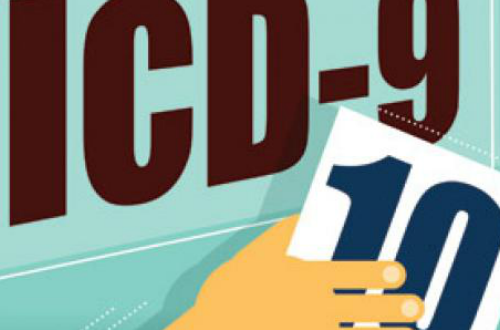The anticipated change to International Classification of Disease (ICD-10) reimbursement codes has loomed over the healthcare industry for quite some time, and the legislation recently signed on Tuesday April 8th further delays the actual date of switch from the currently-used ICD-9 to the new coding system until October, 2015. However, Section 212 of the Protecting Access to Medicare Act of 2014 (H.R. 4302) reads as follows: “the Department of Health and Human Services (HHS) may not, prior to Oct. 1, 2015, adopt ICD-10 code sets,” indicating that the change could be much later, with an actual date still dependent upon the federal legislative process.
Having no date for ICD-10, leaves many physician groups, healthcare organizations and hospitals who have been preparing to change to billing using ICD-10 codes later this year in limbo.
One healthcare service provider, Scribe America, detailed their ICD-10 planning. As a company that offers medical scribe services, including clinical documentation and coding to healthcare practitioners, this business has a finger on the pulse of what the US Healthcare profession is doing to implement this change.
“Starting one year ago we created our ICD-10 training material for our scribes that includes an introductory video that explains what ICD-10 is and teaches them about the implementation of ICD-10 versus ICD-9, which is what we are working under now. The video imparts an understanding of the changes; the scribes will be tested on their knowledge of ICD-10 and they will have to pass this test to be considered competent to continue working for us,” said Jackie McDonald, Executive Vice President of Operations at Scribe America, who is overseeing the implementation of ICD-10 in her company.
Ms. McDonald continued to outline the training program: “We then created training videos for each of our 21 medical specialties, ophthalmology, radiology, pediatrics, et cetera. After our scribes pass the test on the introductory information, they will be required, to take the training video for whichever specialty they are working in and to pass that exam as well.”
The specialty videos focus on the most common clinical diagnoses, or clinical conditions. Each clinical condition is broken down to the exact clinical components that need to be documented to ensure that the documentation is ICD-10 compliant.
An example could be given for the emergency departments, since they are the majority of Scribe America’s clients. A common clinical condition in the emergency room is abdominal pain, which has three clinical concepts that must be documented by ICD-10 standards: the type of pain, the findings, and the location. There are several different clinical concepts that must be documented for each hundreds of clinical conditions.
The Centers for Medicare and Medicaid Services estimate the previous delay of the ICD-10 switch to 2014 has cost between $1.1 billion and $1.6 billion, and further estimate that delaying the switch another year will cost at least that amount and probably more since most organizations are further along in their preparations for the ICD-10 transition. In cases where training has already taken place, many healthcare professionals will simply forget what they have learned over the one year’s delay in implementation.
However, the effect of the delay on Scribe America has been to postpone scribe training to minimize the impact of the delay on costs and the need for re-training. According to Ms. McDonald, “The implementation date had been set for October 1, 2014 so we developed training to be rolled out during this summer and to train our scribes during June, July and August so that each one of our current scribes would be compliant by September and then the training would be made available to our new hires”.
Ms McDonald continued, “As of April 1, we’ve had to adjust our training schedule; we are training only on an as needed basis. We have had three emergency rooms that have implemented ICD-10 documentation procedures prior to the actual date that it can be used. Our entire set 45 project leaders will be trained in ICD-10 and then they will offer training to any of our clients who wants to go live before next year. I believe many more will want to move forward with training, “she said. “ We have stopped training scribes until the date for implementation is set, except on an as needed basis based on which of our clients want to move forward, so we will just pick up next year with the overall training of our scribes.”
Ms. McDonald believes many of the clients are probably underprepared; “I don’t think the extra year delay will push the client – those not prepared this year won’t be prepared next year,” she said.
She is concerned that the clients will be underprepared and, since the medical scribes can only write down what the doctors tell them to write, measures are needed to counteract this. Currently, scribes are being trained to do what ScribeAmerica has coined ‘TASC’. “Scribes will prompt the provider by asking for Timely and Appropriate Scribe Clarification. Using the emergency room example, if the location of abdominal pain is missing from the report, our scribes will prompt the provider in order to remind them that the location of the pain is still needed. We have created cheat sheets with all the emergency room clinical conditions and the clinical documentation so the scribes will be able prompt the providers to create compliant documentation.”
Asked about the overall impact of ICD-10 on this business, she commented, “We have seen a tremendous jump in interest from individual practitioners in the past few months, we are expanding greatly in the outpatient setting, where there here has been an increase in need from single providers to ensure their documentation is compliant and won’t result in penalties.”



